To leash or not to leash — should that even be a question?
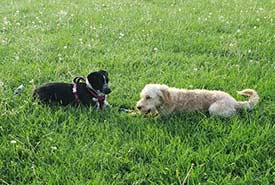
Winona enjoying some off-leash time at a dog park. (Photo by Samantha Cava)
From one dog lover to another, there is nothing better than seeing your canine companion happy in nature without the constraints of a leash. Whether it is running freely in an open meadow, jumping over boulders or zig zagging through trees, there is no denying it — dogs love being off leash. However, over the years of working within the conservation field, and having numerous conversations with concerned biologists, I have come to the important conclusion that letting my dog enjoy nature sans leash may come with severe consequences, not only for my beloved pet, but for nature as well.
While I was working for the Nature Conservancy of Canada (NCC), my appreciation and admiration for environmental stewardship continued to grow. I learned about the hard work it takes to maintain the ecological integrity of natural areas. NCC conservation biologists not only maintain our properties to protect the plants and animals found there, but also so it can be enjoyed by visitors. Nevertheless, all of this stewardship work could go down the drain as a result of the negative impacts of dogs roaming these natural areas off leash. I remind myself of this anytime I am hiking and get the urge to unleash my dog and let her roam free.
Here are some reasons behind the dogs-on-leash rules that you might see at many conservation areas:
Threats to conservation
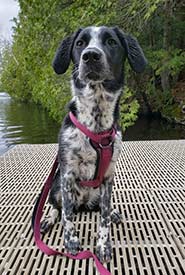
Hiking on a rainy day with Winona (Photo by Samantha Cava)
Dogs roaming off the trail can damage plants and animal habitats by trampling, scratching and digging. This disturbs soil and, along with dogs' urine and feces, can inhibit the growth of native plants and may leave the ground bare and more desirable for invasive plants. Your pet’s fur or paws are like Velcro in nature; there is a risk of your pet wandering into an area with invasive species, collecting their seeds and distributing them to other areas, including back to your own garden.
Another big concern in natural areas is the disturbance by ground-nesting birds. When dogs chase an animal, even if they do not catch and kill it, they may still indirectly cause harm by forcing the animal to leave their habitat where they feed, breed and rest. Delicate ground nests may get trampled and destroyed, and birds may abandon their nests if they are disturbed too frequently. Also, dog urine “marks” the territory, which can repel wildlife and create unsuitable habitat for wildlife.
Even healthy dogs can carry viruses, bacteria and parasites, which can be passed on to wild animals through their excrement. When your dog is off leash, they might do their business in a hard-to-reach place for you to pack it out, and their feces could impact native plants and animals.
Risks to you and your dog’s welfare
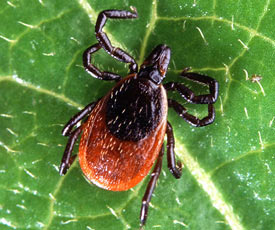
Adult deer tick (Photo by Scott Bauer/Wikimedia Commons)
Dogs roaming freely through brush can also bring home unwanted ticks that may carry and transmit Lyme disease to you or to them. Additionally, off-leash exploration may lead to unwanted and potentially deadly interactions with animals like coyotes, wolves, bears and porcupines, to name a few. Or, your dog may get injured in the brush or eat something it's not supposed to. All of this can be minimized by keeping your pup on a leash as you explore the outdoors.
Trail cooperation and etiquette
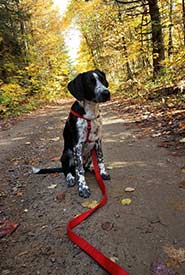
Winona's first hike (Photo by Samanta Cava)
When exploring any public outdoor recreation area, more often than not you will be sharing the trails with others that day. Some people might have zero interest in interacting with your off-leash pup because of fear or other negative association, no matter how friendly your dog might be. Older hikers, or people enjoying the trails who have a physical ailment, may be easily knocked over by an unleashed, boisterous dog. To avoid negative interactions with other hikers, and possibly their leashed dogs, it is always best to keep your dog on a leash.
What are other options?
There are many safer and more responsible options for your dog to explore the outdoors off leash. Many parks across Canada offer dog-friendly trails, fenced-off exercise areas and designated dog beaches. If you want your dog to have a modified, independent experience on-leash while hiking, try buying an extendable/retractable leash that allows them more freedom within the boundaries of the marked trails.
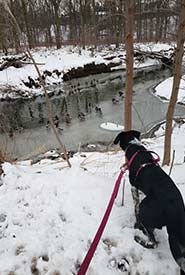
Winona amused by mallard ducks during a winter hike. (Photo by Samantha Cava)
Hikes in nature are an important part of developing a strong bond between you and your pup as well as excellent exercise for your pooch. Some may argue that their dog can only get the proper amount of exercise running off leash, but if you take your dog for longer on-leash walks, or change up the hiking routes to expose them to different smells and atmospheres, they are bound to be pooped by the end of the day. Although dogs would probably much rather be off leash and not physically attached to you while out in nature, there is no denying they are just grateful and happy to be spending time with you!


